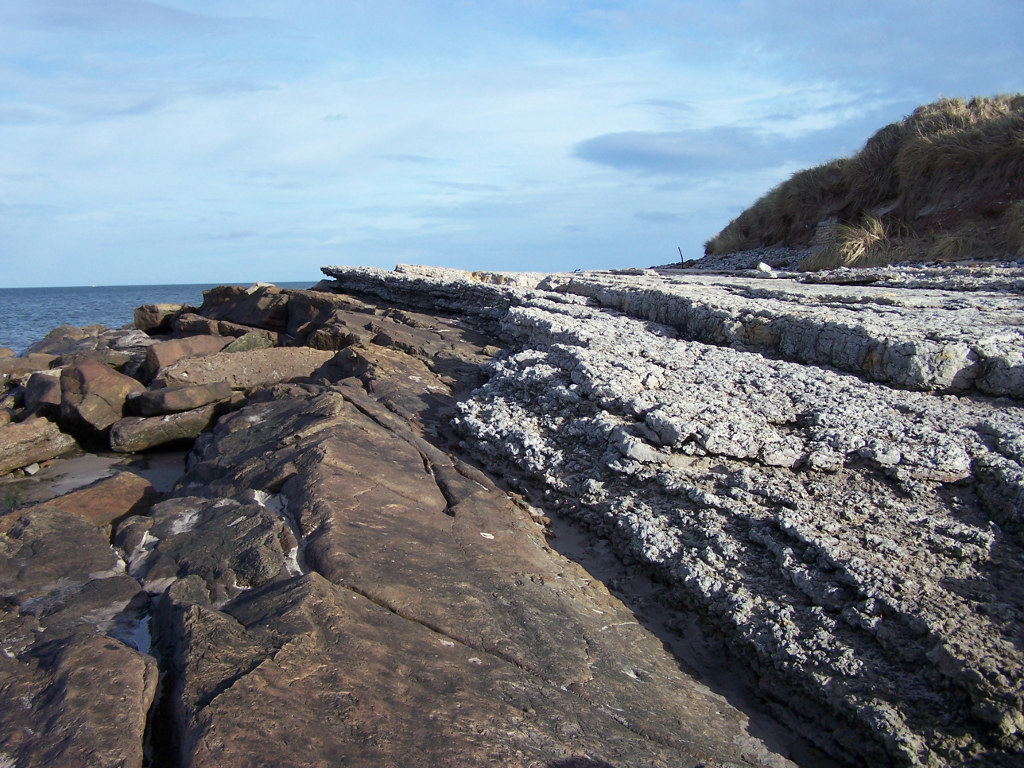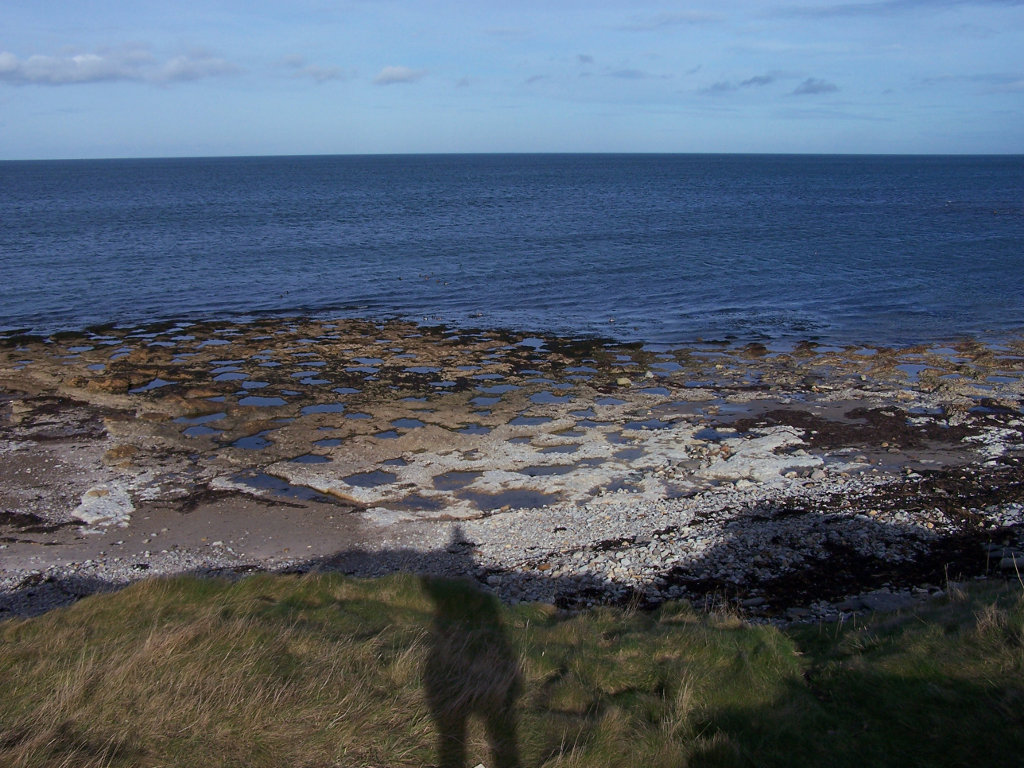I spent most of today writing exam questions. Not my favourite way to spend a Saturday, but I guess I was paying for taking most of Monday off to go for a walk along the beach. We got as far as White Sands Beach, a couple of miles down the coast from Dunbar. Lafarge are busy digging up the Carboniferous limestone here to make cement, but there is a strip along the coast that is protected from their activities. The limestone here is not the metres and metres of nothing-but-limestone that you get in Derbyshire or the Northern pennines. Instead, it comes in layers a few metres thick, sandwiched between layers of sandstone. You can see this very clearly at the east end of the beach.
The limestone (right, higher up the beach) looks almost like dodgy old cement, except for the fact that it is stuffed with fossils. It isn’t very thick; where the recent bad weather has eroded the soil at the top of the beach you can see the top of the limestone. This band is called (I think) the Middle Longcraig limestone; it is one of several similar limestone bands.
A bit further along, the top surface of the limestone is covered with basin-shaped depressions.
The basins are thought to be the locations of root balls of tree-sized plants that grew in a soil layer immediately on top of the limestone. So they are of a similar age to the limestone itself; they are not the result of more recent erosion.
Talking of erosion, it always amuses me to see this phenomenon on a beach.
It is almost like a scale model of the “crag and tail” landform that Edinburgh Castle and the Royal Mile are built on, with the pebbles representing the castle rock and the wind representing the ice sheet.
In addition to the rocks I saw four sorts of ducks. Definitely a day too nice to have spent indoors.




